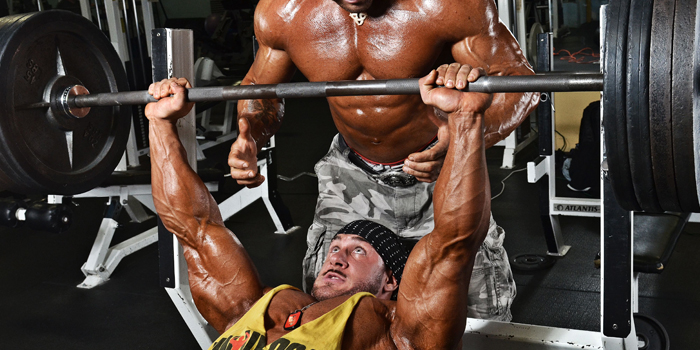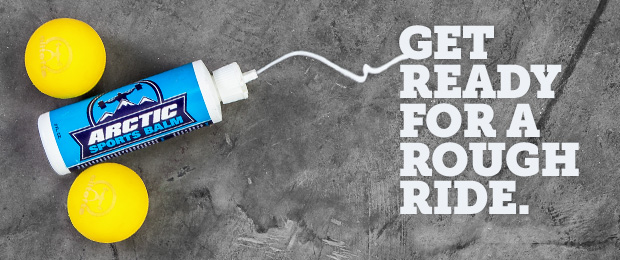
DOMS, short for delayed onset muscle soreness is acute muscle soreness occurring 24 to 48 hours after strenuous physical activity. For the sake of this article, which will discuss the causes and implications of delayed onset muscle soreness, I will use the abbreviation DOMS. Let’s begin by talking about what causes DOMS.
Reasons for the Occurrence of DOMS
The sequence in which DOMS occurs is as follows:
- During exercise, eccentric muscle actions cause structural muscle damage. Damage to the muscle cells should be induced so that the body would rebuild the cells and activate their adaptation. The adaptation is going to activate muscle growth and the ability to tolerate even greater load in the future.
- As a result of muscle damage there is a decrease of calcium from the sarcoplasmic reticulum, which then accumulates in the mitochondria and reduces the production of ATP.
- Buildup of calcium in mitochondria leads to the activation of the enzyme that breaks down contractile proteins, and this degradation causes inflammation.
The Sensitivity to DOMS
Even athletes with many years of training can experience DOMS, but the sensitivity to DOMS still decreases with training experience, because of adaptation. Younger athletes that are just starting with training are going to have very strong reactions to training and an enhanced sense of DOMS, precisely because of the lack of adaptation to this kind of stress. Also, older people due to their age, changes in hormonal status and reduced ability for recovery may experience severe inflammation.
RELATED: Misconceptions About Lactic Acid
Because of this, in the beginning of a training process it is important to start with lower intensity and volume to prevent high levels of inflammation that could lead to negative feelings towards physical activity.
Misconceptions
1. Probably the biggest misconception is that DOMS occurs because lactic acid accumulates during exercise. High-intensity activity does lead to lactic acid accumulation, but after physical activity, during rest, lactic acid is excreted or burned for energy. Within an hour after exercise lactate levels are reduced to values similar to those prior to the start of physical activity. (Siff, Verkhoshansky, 2009) But, as we said, DOMS occurs 24-48 hours after the activity. For this reason, the argument that lactic acid causes DOMS is shown to be incorrect. DOMS is the result of muscle damage that causes inflammation.
2. No soreness, no growth? In training for, DOMS can be a good indicator of muscle damage caused by training. As we already indicated, the body renews the damage to muscle cells so that it can endure even higher loads in the future. The outcome of this is muscle growth. However, it is important to recognize when the inflammation is excessive – if 10 days after training you still can’t recover, chances are you exceeded your current capacities. Severe inflammation like that is going to decrease optimal performance and lower you overall motivation for training. For example, if you have severe inflammation in quads and adductors you will not be able to have such an effective performance for the deadlift as you would have without the inflammation.
Also, a genetic component is a big factor in DOMS. Some people can feel inflammation in some muscles even if the intensity and volume of the workout is very low, others rarely feel inflammation no matter how high the intensity and the volume is. For some people, certain muscle groups get sore easier than others. For example – someone can feel high levels of soreness in quads but very low soreness in the shoulders, even though intensity and volume was high for both muscle groups. Why is that so? The correct answer is not yet known, but it is certainly genetically determined. For this reason, evaluating the quality of training with regards to the levels of inflammation is not fully effective, and does not need to be the leading factor in such evaluation.
3. Stretching reduces DOMS. Herbert, Noronha and Senior (2011) did a systematic review of studies that have examined the impact of stretching before or after training on reducing DOMS. 12 studies were discussed in a systematic review. Results showed that pre-exercise stretching reduced muscle inflammation by 0.5%, on a scale of 0-100%. Stretching after training reduced muscle soreness by 1%. One study showed a reduction in peak muscle soreness over a one-week period by, on average, four points on a 100-point scale. As we can see, the results in the reduction of inflammation have been achieved, but are not so significant to merit further consideration. Authors conclude that stretching before, after or during physical activity does not lead to a reduction in DOMS.
Another interesting issue is whether static stretching before training reduces the possibility of generating force. An interesting study from 2013 investigated just that. Bastos et al. examined how static stretching before and during activities affect the development of strength in 8 different exercises and the levels of IGF-1 (insulin-like growth factor). The study was conducted during a 10-week period. The subjects were divided into three groups:
- The first group did static stretching before training.
- The second group did static stretching during training, before each set.
- The third group didn’t do any form of static stretching.
The group that didn’t do any form of static stretching made improvements in strength in all eight exercises, as opposed to the group that did static stretching. Namely, the groups that did static stretching made improvement in strength only in a few exercises. Also, the largest increase in the levels of IGF-1 had the group that didn’t do any stretching. This is an interesting topic to search for in studies to come.
References
- Borges Bastos CL, Miranda H, Vale RG, Portal Mde N, Gomes MT, Novaes Jda S, Winchester JB. Chronic effect of static stretching on strength performance and basal serum IGF-1 levels. J Strength Cond Res. 2013 Sep;27(9):2465-72.
- Herbert RD, de Noronha M, Kamper SJ. Stretching to prevent or reduce muscle soreness after exercise. Cochrane Database Syst Rev. 2011 Jul 6;(7).
- Verkhoshansky, Siff. Supertraining. Verkhoshansky; 6th expanded version edition (2009).
Jozo Grgić is a Master of kinesiology, Faculty of Kinesiology, University in Zagreb and a Fitness Index certified operator. Inbound certified for marketing.










